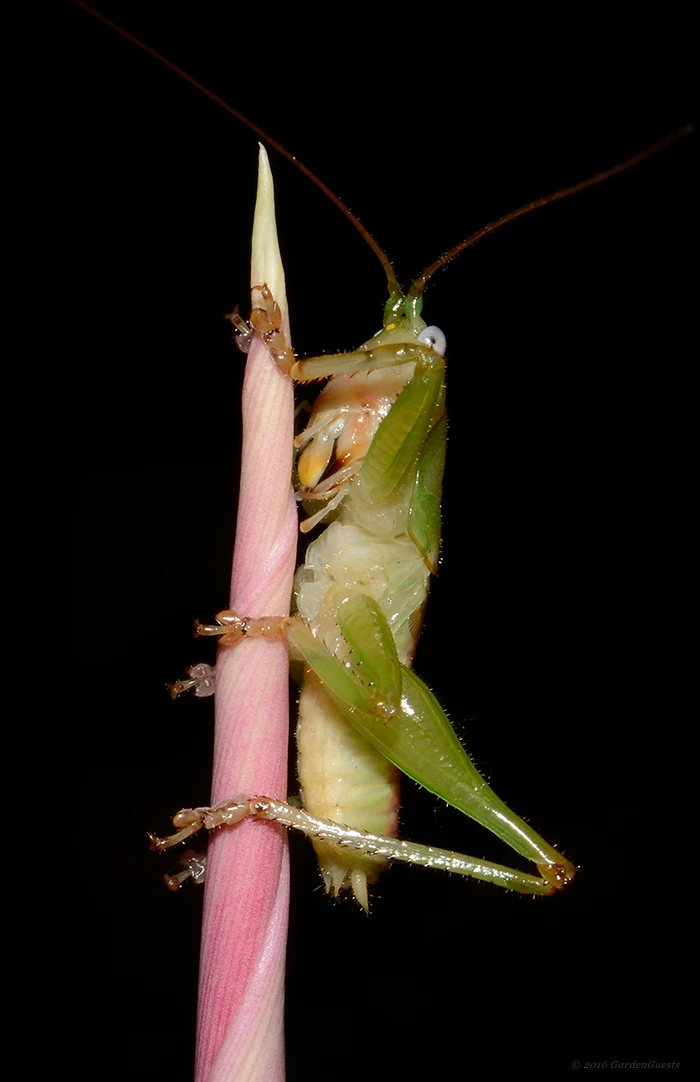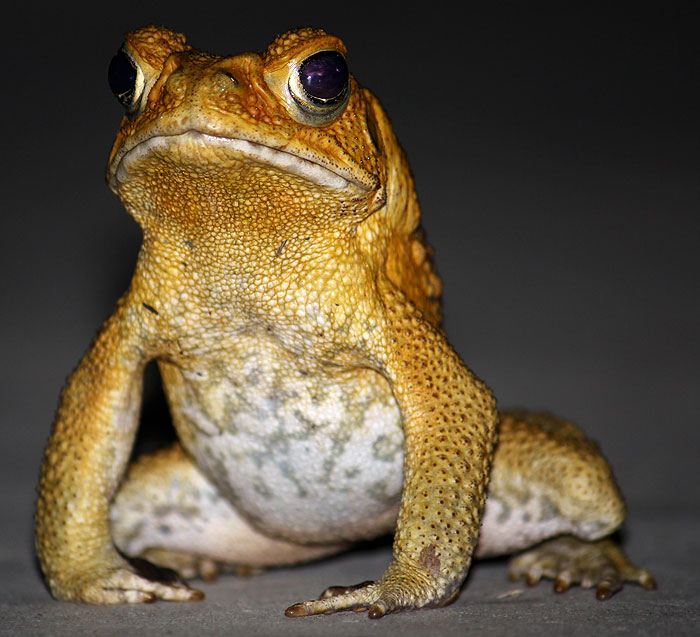White-kneed king cricket and friends
There are some critters that I occasionally stumble across that give me pause. I've seen them in books or online - but never in the flesh. Well, this is one of them. The white-kneed king cricket. I knew the very moment the beam from my head torch fell upon him, or rather her exactly what she was ...
They are related to the New Zealand weta and quite large - this one was around 75-80 mm total length ... click the pics to enlarge
Happily we saw two ... it never rains' and all that right?. Anyway, at the end of her abdomen you can clearly see the ovipositor (used for placing her eggs in the ground) - and while it looks like a dagger it doesn't have any real defensive value that I'm aware of. However, other insects have modified the design and the ovipositor in some has become a sting.
Now you might be wondering what that absurd pinkish dot is in the middle of her head. It's actually a 'simple eye' (many insects have them), but here's what David from Bunyipco has to say about it:
Interesting stuff eh? And speaking of such things here's an excellent example of dorsal ocelli on this stunningly handsome Greengrocer cicada:
I'll be doing a post on this insect in the future - so we'll leave this guy for the time being...
A little more about invertebrate modifications - using one of my favourites - a mantid. The raptorial adaption of the those forelimbs is, IMO quite the entomological marvel.
Recently I've also come across some critters in an, if not embarrassing state of undress, - certainly a vulnerable one. The first was this spider hanging underneath its discarded exuviae in the dead of the night ...
And then this cricket, who paused, seemingly without a care in the world to do a spot of grooming.
The insect below is not the same insect as in the previous two photos. This little guy though packs quite the serious bite. Those mandibles do not seem to me to be built for chewing leaves etc. And though it's a juv I am seriously wondering if it isn't some type of predatory katydid - perhaps if it survives long enough, and I see it again, the mystery will be solved.
Since then, many species of crickets have been found to be carrying the same response to this selective pressure, a mutation leaving males unable to chirp was observed amongst a population of field crickets on the Hawaiian island of Kauai, enabling these crickets to elude their parasitoid predators.
They are related to the New Zealand weta and quite large - this one was around 75-80 mm total length ... click the pics to enlarge
 |
Penalva flavocalceata |
Happily we saw two ... it never rains' and all that right?. Anyway, at the end of her abdomen you can clearly see the ovipositor (used for placing her eggs in the ground) - and while it looks like a dagger it doesn't have any real defensive value that I'm aware of. However, other insects have modified the design and the ovipositor in some has become a sting.
 |
It's a bit difficult to show scale here - but she's a big girl |
Now you might be wondering what that absurd pinkish dot is in the middle of her head. It's actually a 'simple eye' (many insects have them), but here's what David from Bunyipco has to say about it:
... a median ocellus, a structure noted before on this blog. It is thought this "eye" contains a single lens that detects light. This may be involved in helping the cricket find its way back to its enclosure after a night of foraging.
Interesting stuff eh? And speaking of such things here's an excellent example of dorsal ocelli on this stunningly handsome Greengrocer cicada:
 |
(Cyclochila australasiae) |
I'll be doing a post on this insect in the future - so we'll leave this guy for the time being...
A little more about invertebrate modifications - using one of my favourites - a mantid. The raptorial adaption of the those forelimbs is, IMO quite the entomological marvel.
 |
Very few small animals will escape that embrace |
 |
Slowly extending those limbs - keeping an 'eye' on me though |
 |
This 'Tree-runner' shares the same adaption |
Recently I've also come across some critters in an, if not embarrassing state of undress, - certainly a vulnerable one. The first was this spider hanging underneath its discarded exuviae in the dead of the night ...
 |
Possibly (Lycosidae) |
And then this cricket, who paused, seemingly without a care in the world to do a spot of grooming.
 |
Growing up ain't easy |
 |
A vulnerable time |
The insect below is not the same insect as in the previous two photos. This little guy though packs quite the serious bite. Those mandibles do not seem to me to be built for chewing leaves etc. And though it's a juv I am seriously wondering if it isn't some type of predatory katydid - perhaps if it survives long enough, and I see it again, the mystery will be solved.
 |
Some fairly serious mouth parts on display |
One of the fastest examples of evolution ever recorded
In 1975,Dr. William H. Cade discovered that the parasitic tachinid fly Ormia ochracea is attracted to the song of the cricket, and uses it to locate the male to deposit her larvae on him. It was the first known example of a natural enemy that locates its host or prey using the mating signal.
Since then, many species of crickets have been found to be carrying the same response to this selective pressure, a mutation leaving males unable to chirp was observed amongst a population of field crickets on the Hawaiian island of Kauai, enabling these crickets to elude their parasitoid predators.
Crickets often appear as characters in literature. The Talking Cricket features in Carlo Collodi's 1883 children's book, The Adventures of Pinocchio, and in films based on the book. The eponymous insect is central to Charles Dickens's 1845 The Cricket on the Hearth, as is the chirping insect in George Selden's 1960 The Cricket in Times Square.
Crickets are celebrated in poems by William Wordsworth, John Keats, and Du Fu.
So that's fun too right? Take care
Crickets are celebrated in poems by William Wordsworth, John Keats, and Du Fu.
So that's fun too right? Take care






Comments
Post a Comment